
FURNITURE MARKETING
Sales Speak
Words matter. But sometimes the talk around “wood” can be, well… a little bit creative.
This is not about good or bad. But if you’re spending hard earned money, you deserve more than clever phrasing.
So, let’s cut through the jargon and get real about what’s hiding beneath the surface of your furniture.
What’s Your Furniture Really Made Of?

SOLID WOOD
Solid wood does exactly what it says on the tin: it's timber cut straight from the tree and crafted into form, in this case furniture.
What makes solid wood valuable isn’t just its good looks, it’s how well it lasts making it a proper long-term investment.
Solid wood shouldn't ever need to end up in landfill. It wears in, not out, and can be repaired, reworked and passed down generations. Yes, it’s more prone to natural movement, but well-made pieces are designed to account for that.
UNIQUE FURNITURE
No two solid wood pieces are ever quite the same. Whether it’s the warmth of oak or the depth of walnut, solid wood has a natural character that can’t be faked. Even scratches and marks often add to the story, rather than take away from the look.
With the right craftsmanship and a little care, solid wood furniture outlives trends and throwaway culture.
There are two types of solid wood - and they're not named because of how soft or hard the wood actually is, it's all down to whether they lose their leaves in winter.
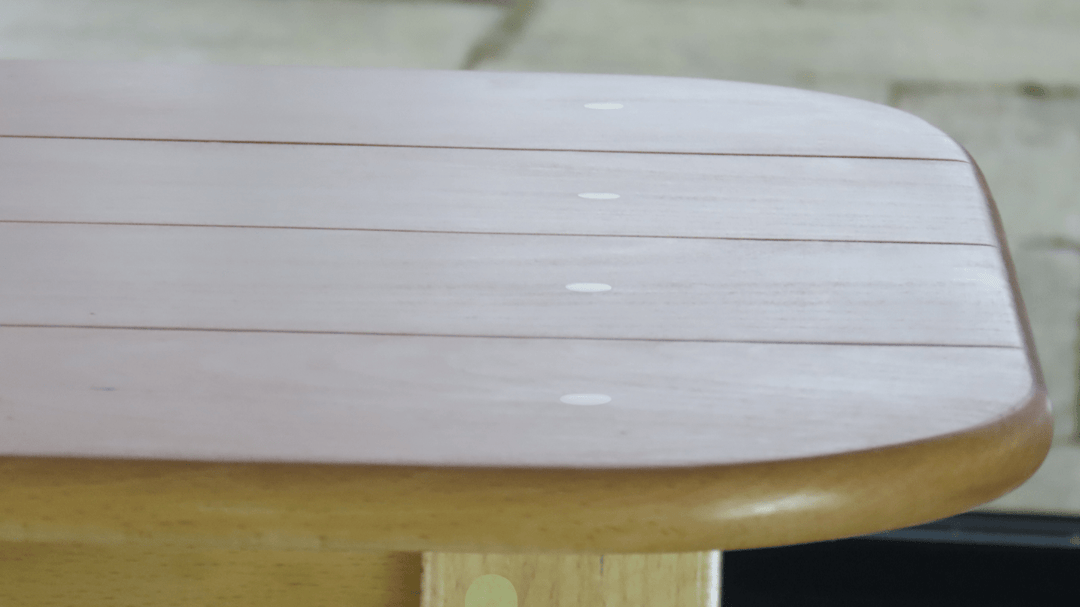
THE TWO TYPES OF SOLID WOOD
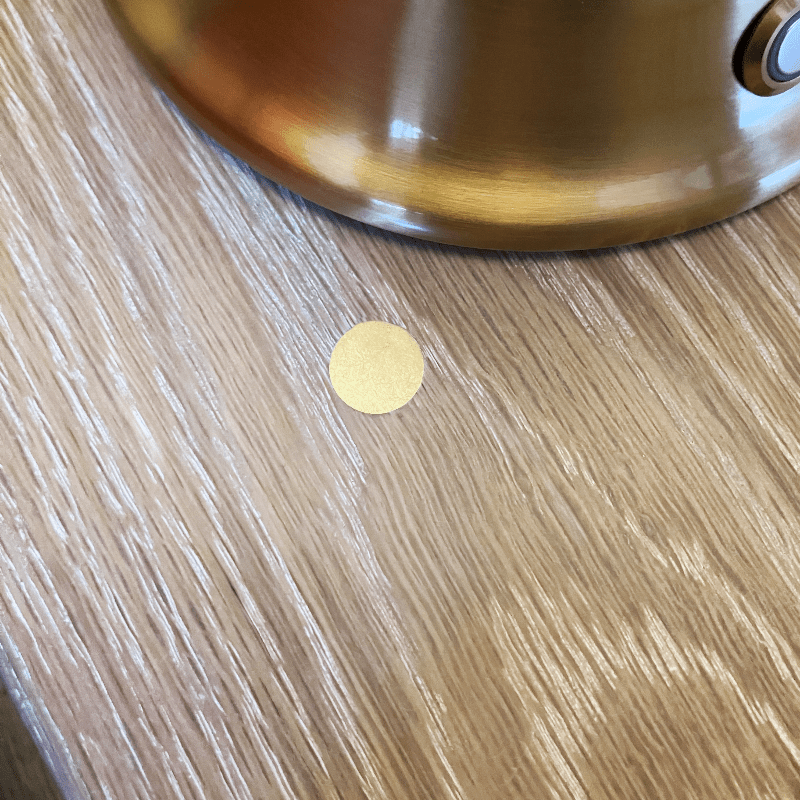
HARDWOOD
Hardwood, like Oak, Ash and Walnut comes from trees that shed their leaves yearly, producing dense, durable timber with a natural grain making them ideal for furniture that’s built to last.
All Twisted Eye furniture is made from hardwood because of its many qualities.
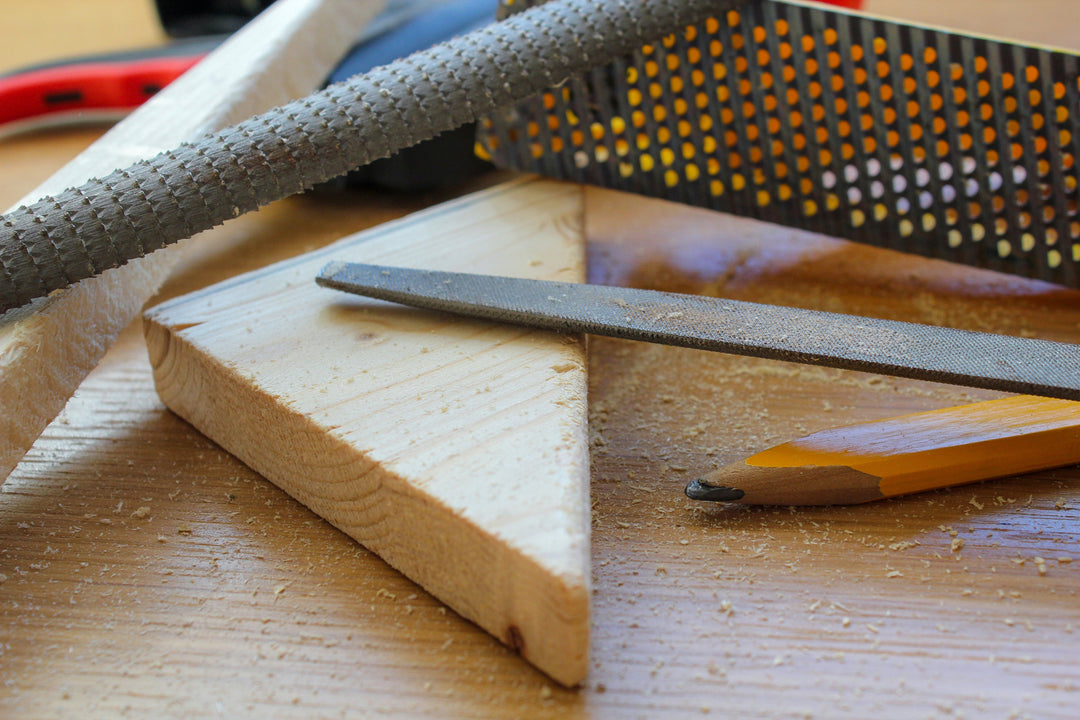
SOFTWOOD
Softwood comes from evergreens, trees that keep their needles year-round resulting in lighter, faster-growing timber like pine, fir, and spruce. It’s less dense and more prone to dents and scratches but still has character.
Since softwood is cheaper, it’s often stained to mimic hardwood colours like dark or natural Oak, so make sure you know exactly what you’re paying for. Pine stained to look like Oak, while absolutely fine if that's what you want, sure isn't Oak.
REINFORCED TIMBER
You’ll often come across terms like oak-faced board, reinforced oak, or veneered board when browsing furniture descriptions.
These phrases can sound impressive, but what they’re all generally describing are thin layers of wood (Veneer) stuck on a core material which isn't bad, unless it's marketed so you think you're paying for solid wood!
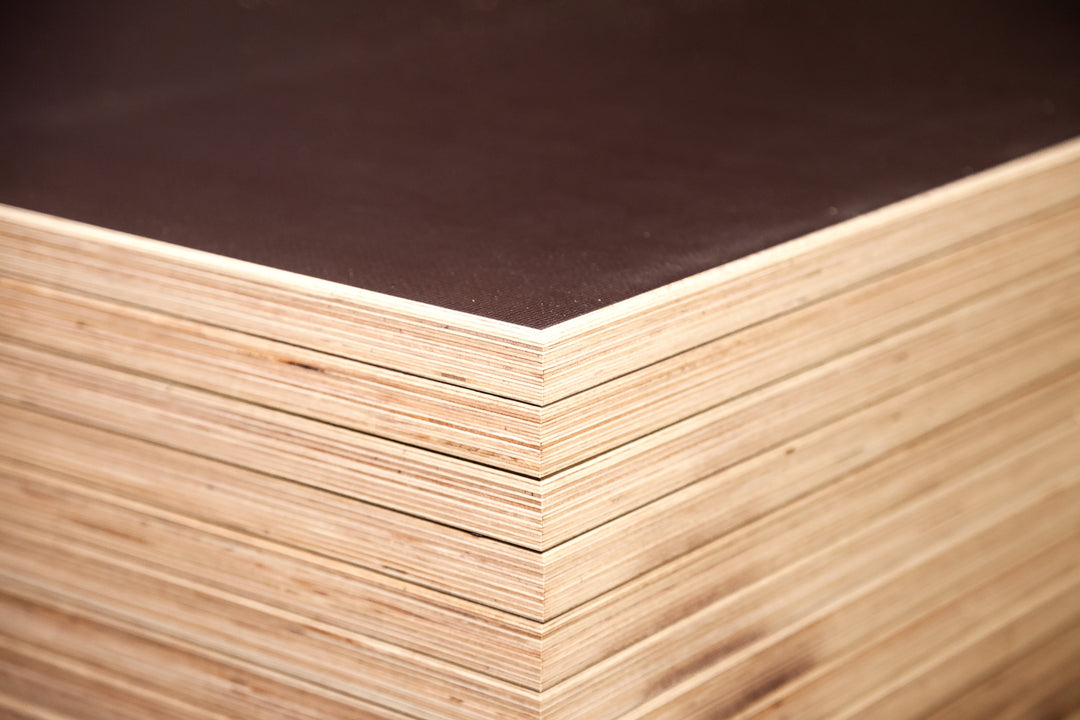
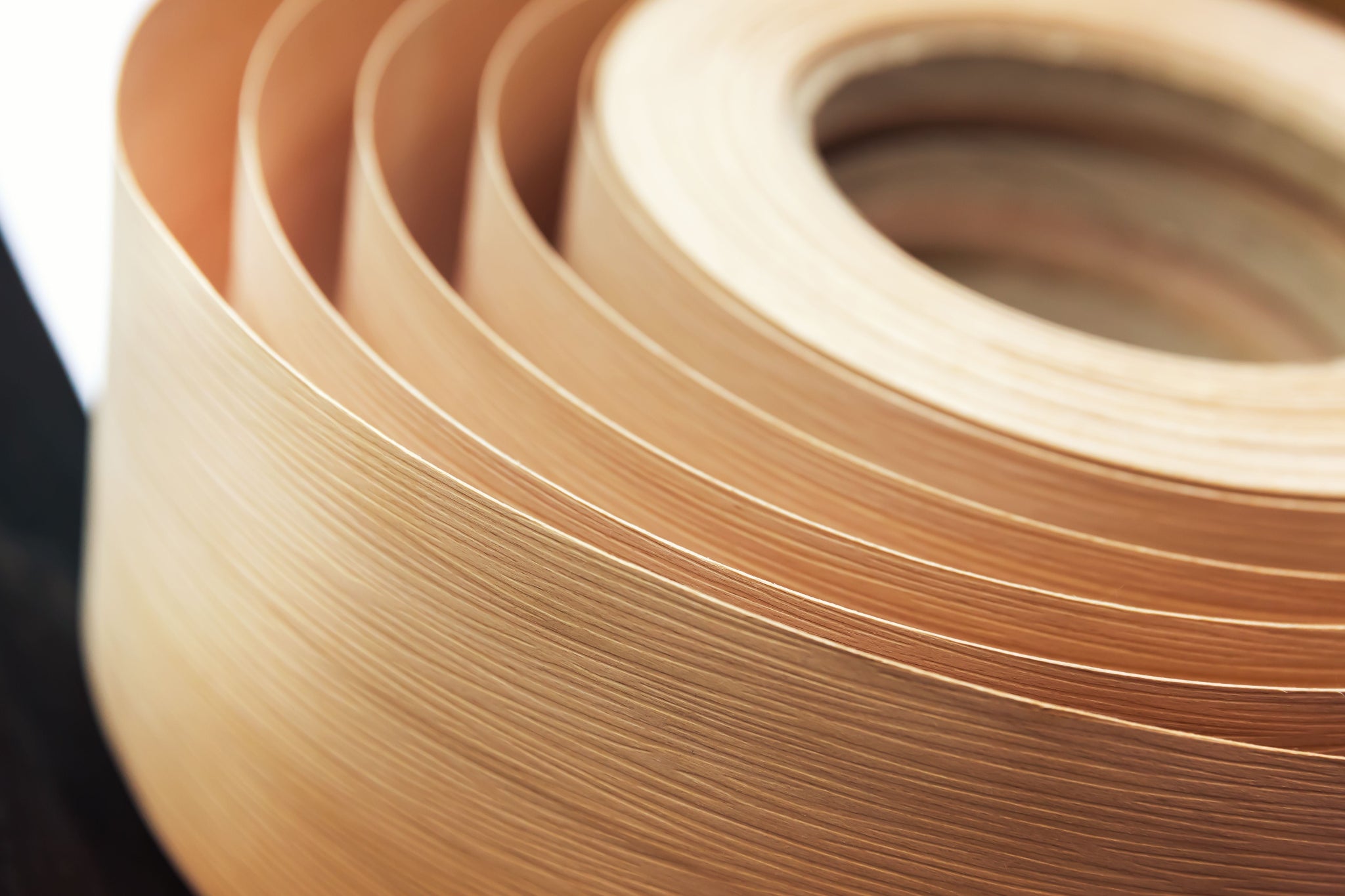
Wood veneer
Substitute for wood
Wood veneer is made by slicing thin layers of real wood from logs into thin sheets, which preserve the grain and texture.
These sheets are sometimes glued onto a cheaper solid wood but more often a low-cost core is used like MDF, particleboard, or plywood, which is then made into furniture.
VENEERED FURNITURE
Veneered furniture nails the look and feel of real wood without generally, the weight or price tag.
Although, because it's only thin slices of real wood, veneer can’t be sanded down to the same extent as solid wood so doesn't have the longevity and any damage can be a pain to fix.
Remember - not all veneered furniture is made equal! Make sure you're happy with the thickness of the veneer and the core material before deciding to buy.
Everything from solid wood to cardboard is used so ask questions if you want to buy furniture that is built to last, not just built to sell!
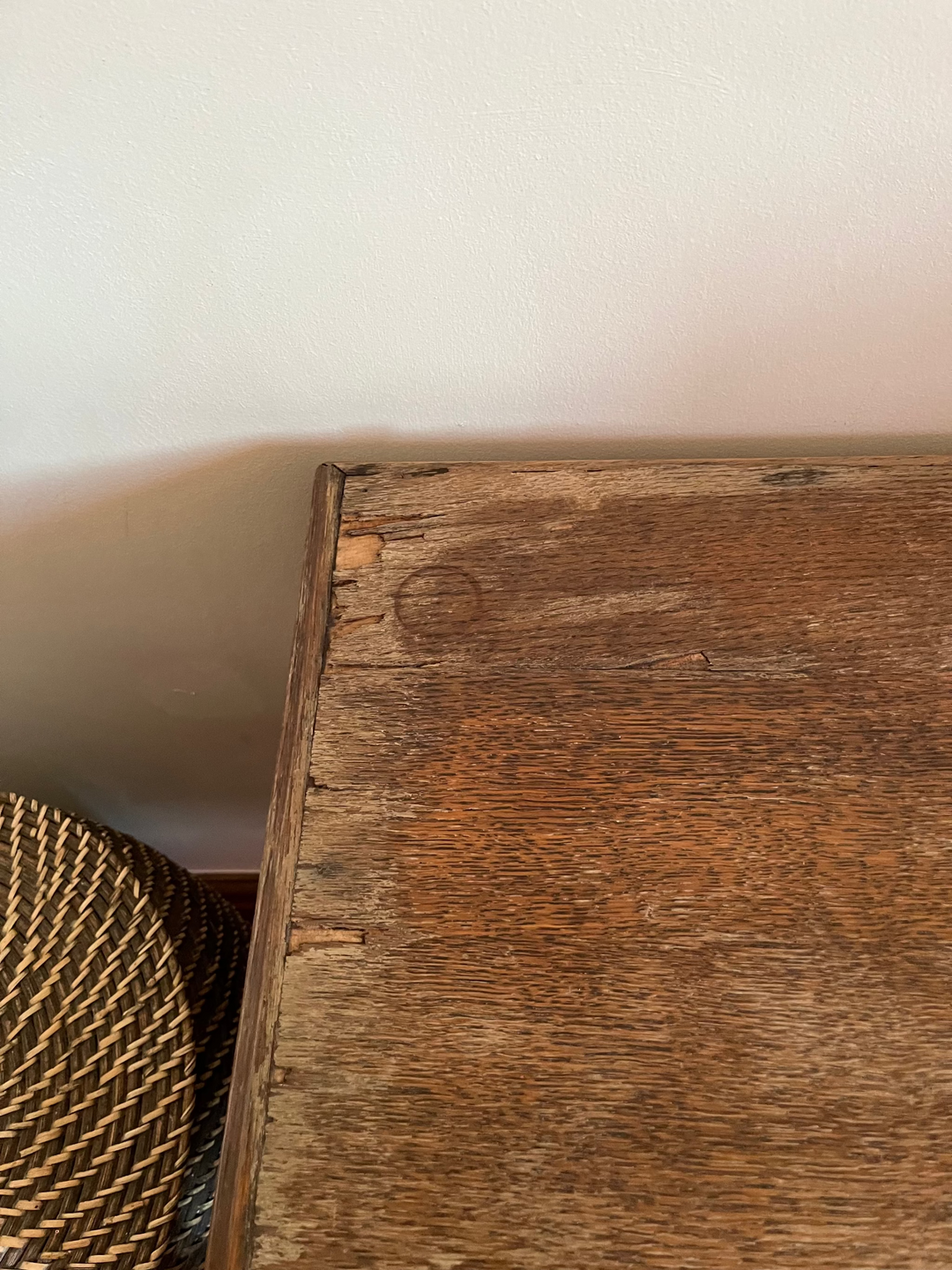
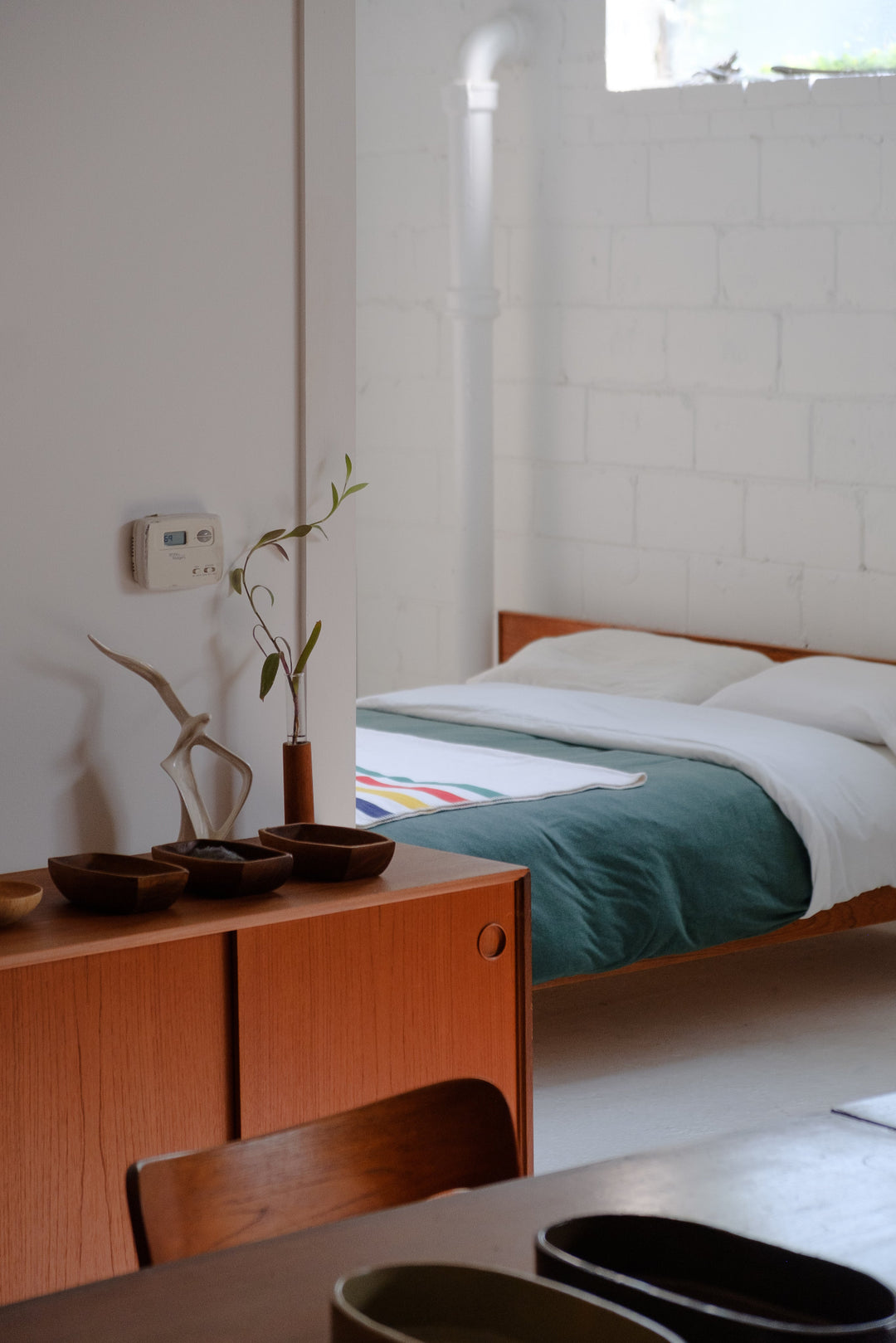
VENEER - CORE MATERIALS

plywood
Plywood is made by layering thin sheets of wood veneer glued at alternating angles, making it strong and stable.
It’s one of the better core materials for veneer because it resists warping and holds up well over time.
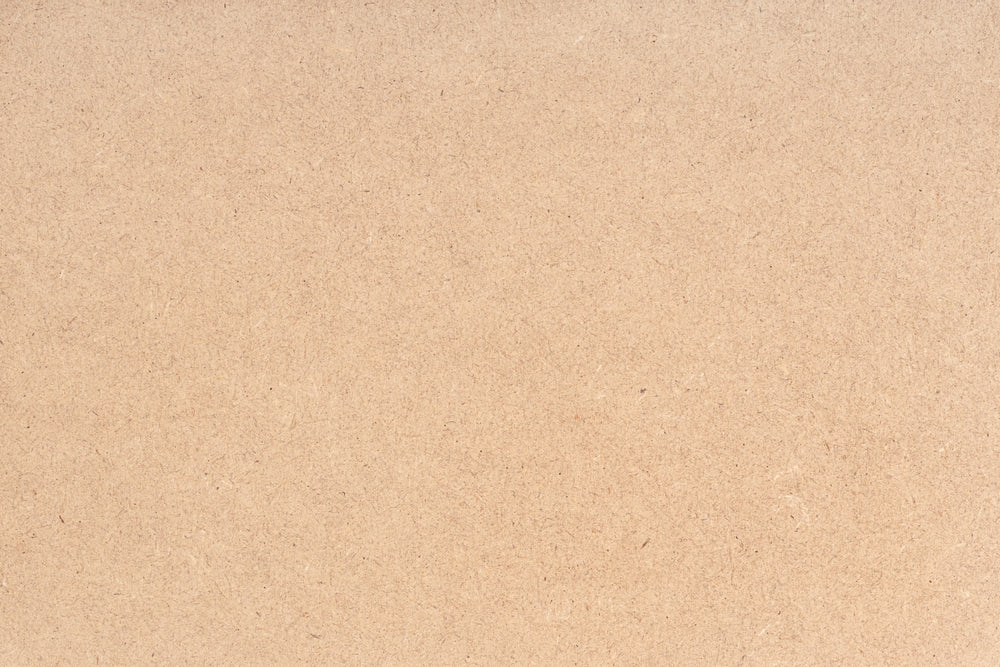
MDF
MDF (Medium Density Fibreboard) is made from wood fibres and resin pressed into a smooth, uniform board. It’s cheap and easy to work with but not as strong or moisture-resistant as plywood.
As a veneer core, it’s fine for budget furniture, but it won’t hold up as well as other options over time or against heavy use.
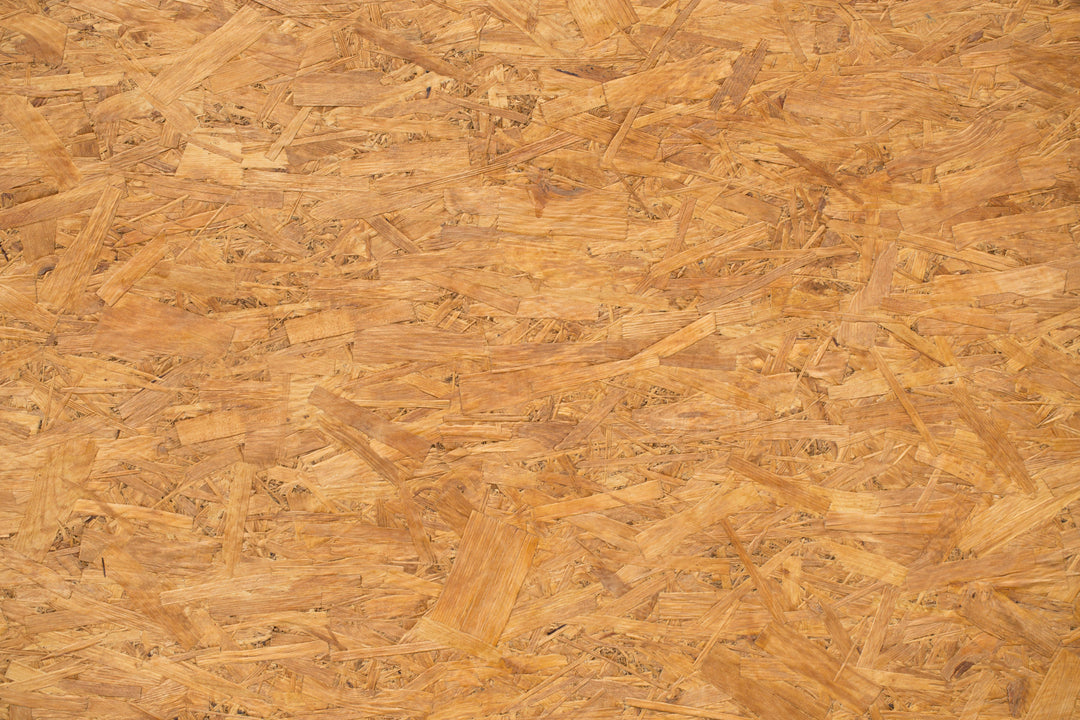
OSB
OSB (Oriented Strand Board) is made from compressed wood strands glued together, creating a strong and affordable board.
It’s more durable than MDF and moisture-resistant but has a rough texture and isn’t usually used where it’s visible. As a veneer core, it’s solid structurally but not the prettiest option underneath.
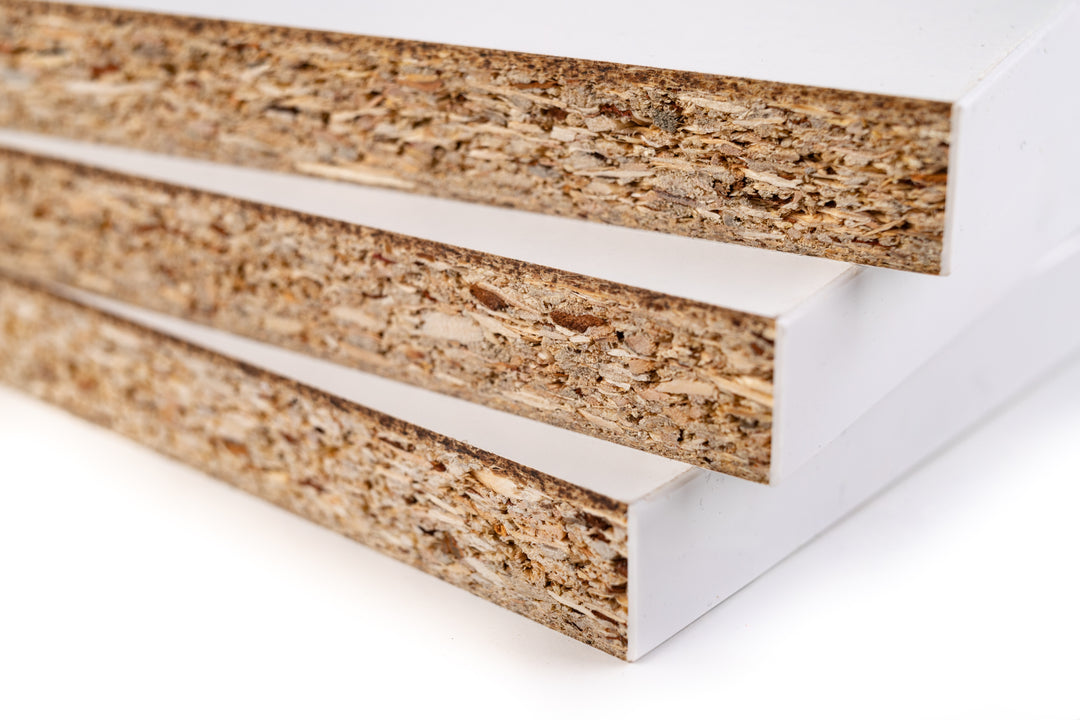
CHIP BOARD
Chipboard, or particleboard, is made by compressing wood chips and resin into sheets.
It’s very affordable but weak and prone to swelling when wet. As a veneer core, it’s a budget option that works okay for light use, but it won’t last like plywood or solid wood beneath the surface.
THE WOOD EFFECT
Keep an eye out for phrases like “solid wood effect” or “wood style”.
They usually mean no real wood had been used at all. Instead, it’s printed vinyl or laminate made to mimic wood grain.
It looks the part, infact it's uncanny how much it looks the part but doesn’t have the texture or durability of the real thing.
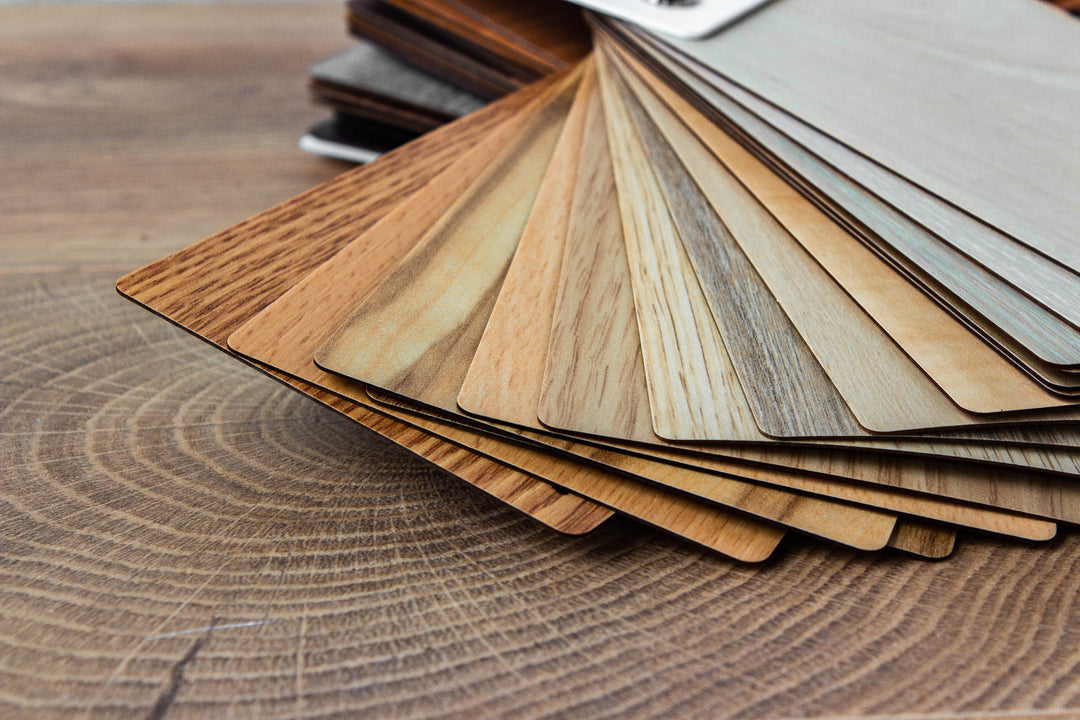
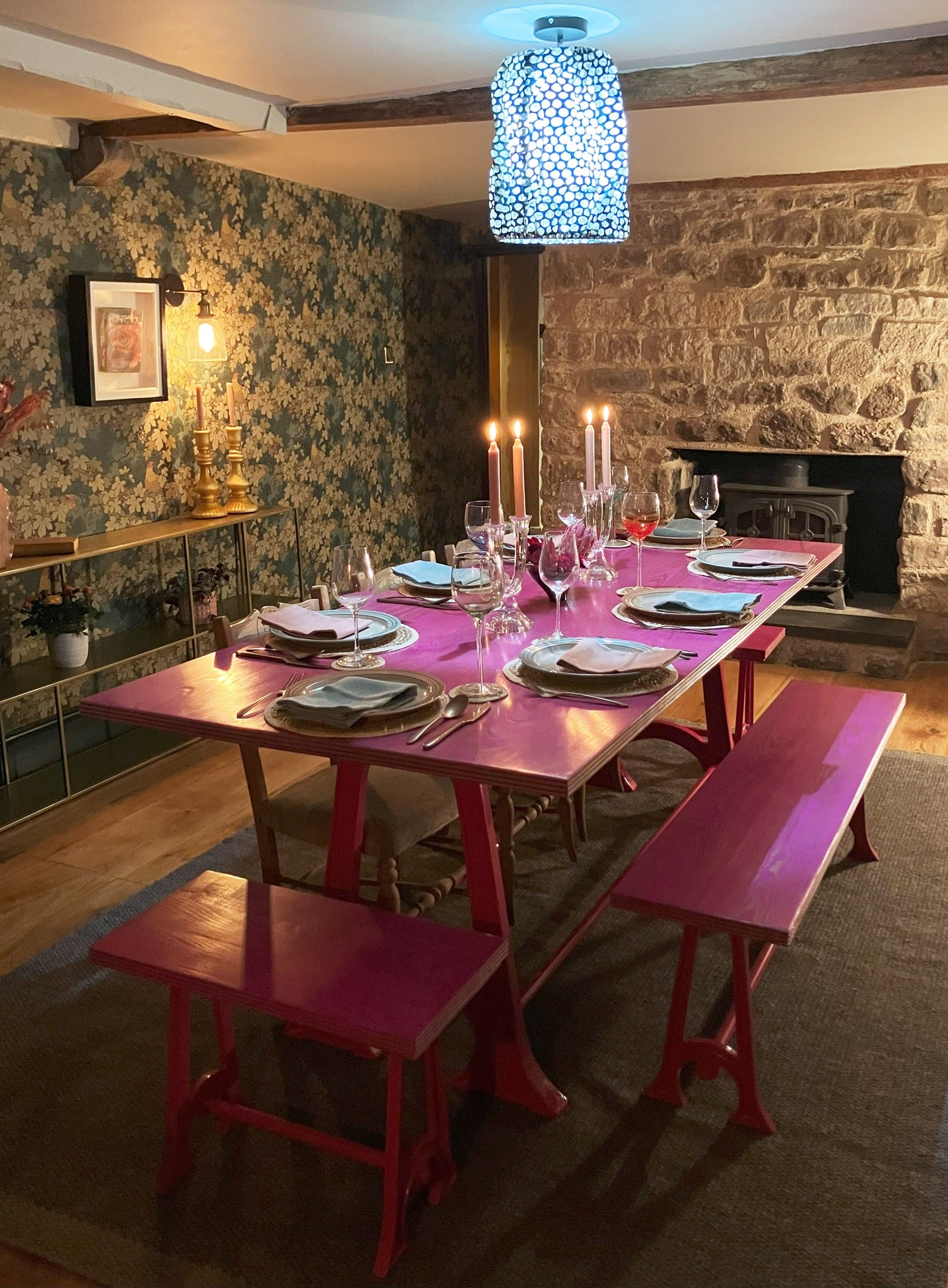
Look Beyond Labels
Savvy Shoppers
Knowing what your ‘wood’ furniture is really made of is your best defense against disappointment and getting ripped off.
Buy whatever material fits your style and budget but dig a little deeper so you know exactly what it is you're coming home with!
Frequently Asked Questions: Solid Wood & Veneer Furniture
Solid wood furniture is made entirely from solid pieces of timber. Veneer furniture uses a thin layer of real wood (the veneer) glued to a core material, usually MDF, particleboard, or plywood.
Solid wood is more durable and long-lasting; veneer can be more affordable and stable in some conditions.
Check the edges and corners, veneer often shows a visible seam or edge where the top layer meets the base. Look underneath or at the back: if the wood grain doesn’t match or changes direction, it’s likely veneer.
You can also knock on it: solid wood sounds heavier and more solid; veneer over MDF sounds hollow.
Not at all. High-quality veneers can look beautiful and be very stable (less prone to warping). But be cautious, cheap veneers over low-quality boards can peel, chip, or sag over time. The key is what’s underneath the veneer and how it’s constructed.
Solid wood is cut directly from the tree and retains its natural grain, knots, and character. It takes more time and raw material to craft, which raises the price.
You’re paying for authenticity, longevity, and repairability.
With the right care, solid wood can last decades or even generations. It can also be sanded, repaired, and refinished, unlike most veneer furniture, which can be irreparably damaged if scratched or chipped.
- Weight and grain, solid wood feels heavy and has a natural, varied grain pattern.
- What type of wood it is - oak, ash, walnut, and Beech are durable options.
- Traditional joinery which suggests quality craftsmanship.
- “wood effect” or “solid wood look” often mean veneer or laminate.
That depends. Responsibly sourced, FSC-certified solid wood is a sustainable choice because it’s durable and repairable. Fast furniture made with cheap veneers and glues contributes to landfill waste but there's good and bad in every industry so look for makers who prioritise traceable materials. And Buy less, Buy better.
If you can, yes. Solid wood pieces age beautifully and they tend to hold their value better over time too. But if budget is tight, look for second-hand solid wood pieces or choose quality veneer pieces with proper construction.































